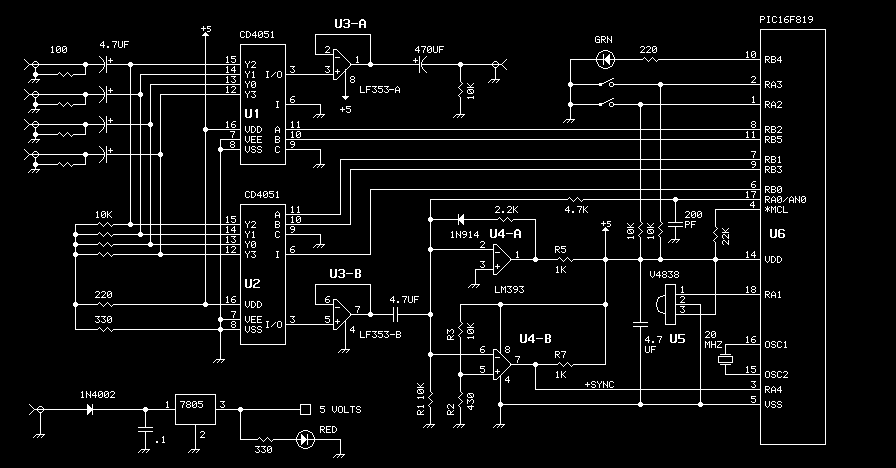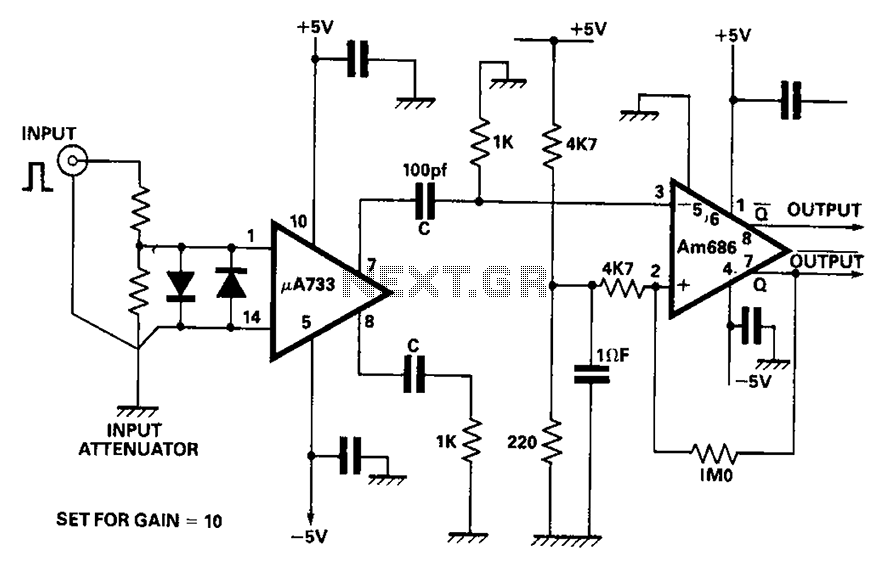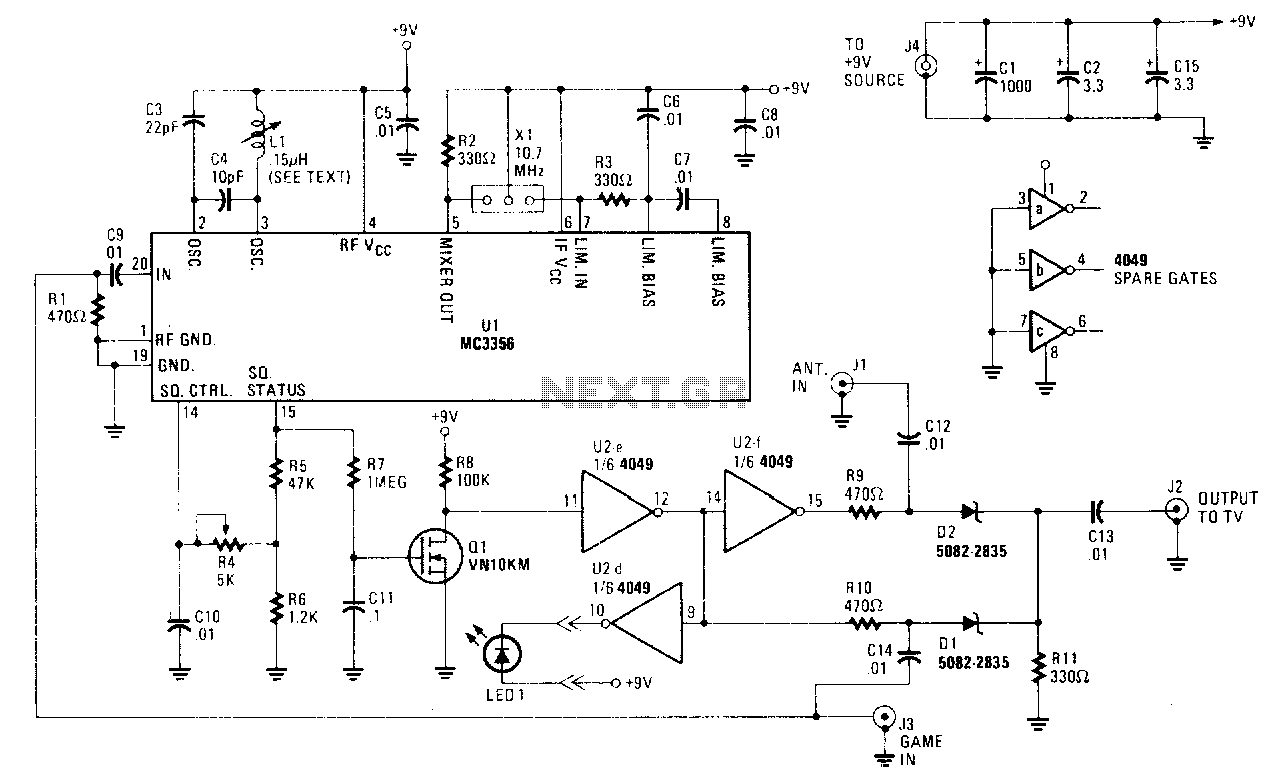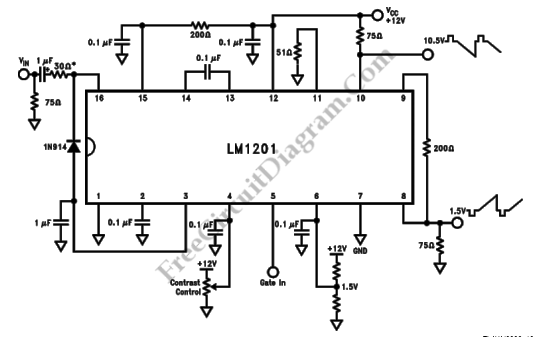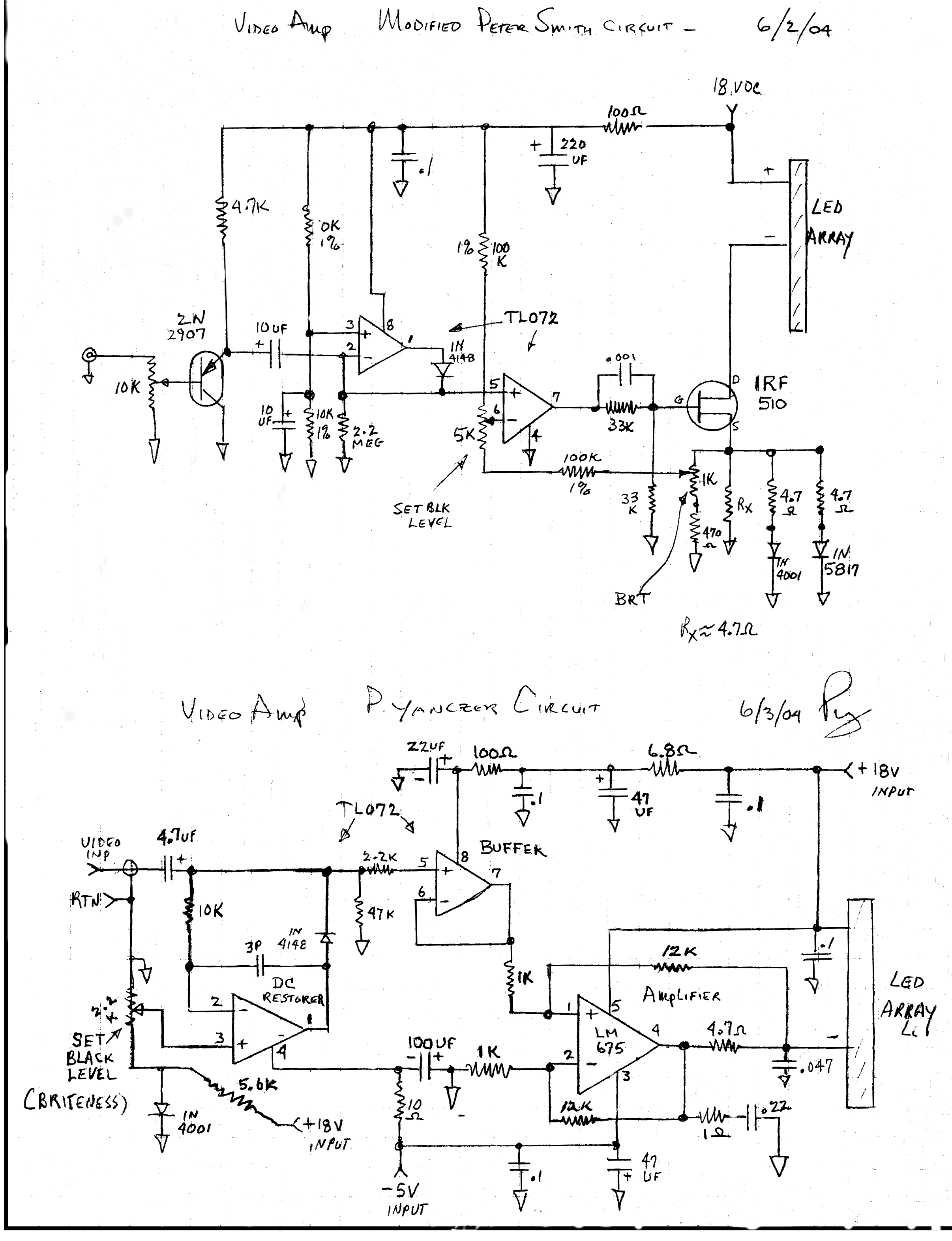
LM1881 LM1881 Video Sync Separator
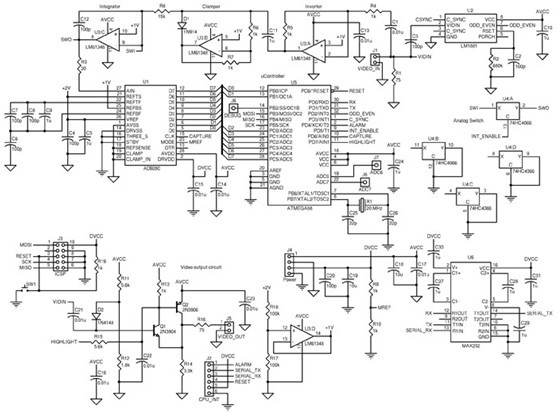
This article provides a brief overview of the NTSC-PAL TV Signal Identifier, specifically utilizing the LM1881. The circuit is straightforward to understand and highly practical. A deep comprehension of the circuit elements and their principles is essential for effective application. The design includes various components such as an ATmega88 microcontroller, an AD9280 analog-to-digital converter (ADC), an LM6134 high-speed quad operational amplifier, an LM1881 video sync separator, a 74HC4066 analog switch, and an RS-232 level converter. The LM1881 video sync separator extracts timing information, including composite and vertical sync signals. This combination of sync stripper and universal video interface can effectively address numerous challenges, including interfacing Super Nintendo systems with various devices, video overlay applications, and locking TV frames for oscilloscopes. Kits, fully tested units, and custom cable assemblies are available through Redmond Cable. The circuit employs a sync-generator chip, a counter, and a decoder to detect the horizontal sync pulse, which occurs at the beginning of line 10 in field 1 of an NTSC television picture. This circuit can also be used to compare the time delay between sync signals at different locations. Additionally, an NTSC/RGB decoder using a TDA3330 is included, which separates a 1V input video into its red, green, blue components, and composite sync. The integrated sync separator (LM1881) in this circuit is particularly useful for interfacing RGB monitors with NTSC video systems.
The NTSC-PAL TV Signal Identifier circuit leverages the LM1881 video sync separator to perform critical functions in video signal processing. The LM1881 is designed to extract timing information from composite video signals, providing essential sync signals necessary for proper display and processing of video content. The circuit architecture integrates an ATmega88 microcontroller, which serves as the primary controller, managing the data flow and processing tasks.
The AD9280 ADC converts the analog video signals into digital format for further processing. This conversion is crucial for applications that require digital manipulation of the video signal, such as video overlays or digital signal processing. The LM6134 quad op-amp is utilized to amplify the video signals, ensuring that the signal integrity is maintained throughout the processing stages.
The 74HC4066 analog switch allows for the routing of video signals between different components, providing flexibility in signal management. The RS-232 level converter facilitates communication with external devices, enabling the integration of the circuit within larger systems.
The design also incorporates a sync-generator chip, which is responsible for generating the necessary sync pulses that are vital for maintaining the timing of the video signals. By detecting the horizontal sync pulse at a specific location in the NTSC video frame, the circuit can accurately synchronize video playback or processing tasks.
Moreover, the TDA3330 decoder takes the composite video input and separates it into individual RGB components along with composite sync, allowing for compatibility with RGB monitors. This feature is particularly beneficial for applications that require high-quality video output, such as gaming consoles or professional video equipment.
Overall, the NTSC-PAL TV Signal Identifier circuit exemplifies a robust solution for interfacing various video systems, providing essential functionalities that enhance video processing and display capabilities. The availability of kits, tested units, and custom cable assemblies through Redmond Cable further supports users in implementing this versatile circuit design.This article briefly describes the NTSC-PAL TV Signal Identifier (LM1881). Although this circuit is very easy to understand, but also very practical. Circuit elements in depth understanding of the grasp of the principle is very effective. Do you know the circuit, you can see and purchase these compo. The chips include an ATmega88 as the main contr oller, an AD9280 ADC, an LM6134 high-speed quad op-amp, an LM1881 video sync separator, a 74HC4066 as a simple analog switch, and an RS-232-level converter. LM1881 Video sync separator extracts timing information including composite and vertical sync, bu. This combination sync stripper and universal video interface can solve a lot of problems for you, including Super-Nintcndo-to-anything interfacing, video overlay and scope TV frame locking.
Kits, fully tested units, and custom cable assemblies are available tlirough Redmond Cable. This unit uses an L. This circuit uses a sync-generator chip, a counter, and a decoder to detect the horizontal sync pulse that occurs at the beginning of line 10 in field 1 of an NTSC television picture. You can use this circuit to compare the time delay between sync signals at various locations, and to determine and.
An NTSC/RGB decoder is shown here. Using a TDA3330, 1V input video is broken down into its R, G, components, and composite synch. U1 is an integrated synch separator (LM1881). This circuit should be useful for interfacing RGB monitors to NTSC video systems. 🔗 External reference
The NTSC-PAL TV Signal Identifier circuit leverages the LM1881 video sync separator to perform critical functions in video signal processing. The LM1881 is designed to extract timing information from composite video signals, providing essential sync signals necessary for proper display and processing of video content. The circuit architecture integrates an ATmega88 microcontroller, which serves as the primary controller, managing the data flow and processing tasks.
The AD9280 ADC converts the analog video signals into digital format for further processing. This conversion is crucial for applications that require digital manipulation of the video signal, such as video overlays or digital signal processing. The LM6134 quad op-amp is utilized to amplify the video signals, ensuring that the signal integrity is maintained throughout the processing stages.
The 74HC4066 analog switch allows for the routing of video signals between different components, providing flexibility in signal management. The RS-232 level converter facilitates communication with external devices, enabling the integration of the circuit within larger systems.
The design also incorporates a sync-generator chip, which is responsible for generating the necessary sync pulses that are vital for maintaining the timing of the video signals. By detecting the horizontal sync pulse at a specific location in the NTSC video frame, the circuit can accurately synchronize video playback or processing tasks.
Moreover, the TDA3330 decoder takes the composite video input and separates it into individual RGB components along with composite sync, allowing for compatibility with RGB monitors. This feature is particularly beneficial for applications that require high-quality video output, such as gaming consoles or professional video equipment.
Overall, the NTSC-PAL TV Signal Identifier circuit exemplifies a robust solution for interfacing various video systems, providing essential functionalities that enhance video processing and display capabilities. The availability of kits, tested units, and custom cable assemblies through Redmond Cable further supports users in implementing this versatile circuit design.This article briefly describes the NTSC-PAL TV Signal Identifier (LM1881). Although this circuit is very easy to understand, but also very practical. Circuit elements in depth understanding of the grasp of the principle is very effective. Do you know the circuit, you can see and purchase these compo. The chips include an ATmega88 as the main contr oller, an AD9280 ADC, an LM6134 high-speed quad op-amp, an LM1881 video sync separator, a 74HC4066 as a simple analog switch, and an RS-232-level converter. LM1881 Video sync separator extracts timing information including composite and vertical sync, bu. This combination sync stripper and universal video interface can solve a lot of problems for you, including Super-Nintcndo-to-anything interfacing, video overlay and scope TV frame locking.
Kits, fully tested units, and custom cable assemblies are available tlirough Redmond Cable. This unit uses an L. This circuit uses a sync-generator chip, a counter, and a decoder to detect the horizontal sync pulse that occurs at the beginning of line 10 in field 1 of an NTSC television picture. You can use this circuit to compare the time delay between sync signals at various locations, and to determine and.
An NTSC/RGB decoder is shown here. Using a TDA3330, 1V input video is broken down into its R, G, components, and composite synch. U1 is an integrated synch separator (LM1881). This circuit should be useful for interfacing RGB monitors to NTSC video systems. 🔗 External reference
